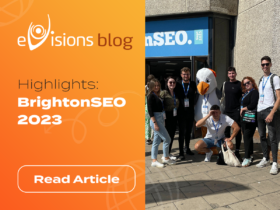Link building as an effective tool for web optimization
28. 06. 2023 AutorLink building is one of the most effective SEO measures. However, it has to be done properly in order to achieve your goals. Learn more about link building in practice and find out what can put your efforts at risk.
What is link building?
Link building is the process of obtaining one-way backlinks or external links to a website. It is a method of search engine optimization (SEO). Its main goal is to improve the overall value of a website in the eyes of search engines and increase the chances of a better ranking. Together with other SEO activities, it can help increase organic traffic, i.e. conversion, and expand overall brand awareness.
Link building in practice: What does a natural link profile look like?
In practice, link building consists of placing hyperlinks on external websites. Such links are called anchors. They can take the form of:
- Keyword,
- A phrase that contains a keyword,
- Navigation text (e.g. here),
- URL,
- An image (in which case the alt caption of the image is treated as reference text).
However, artificially placing hundreds of random links has no guarantee of success. The goal of every link builder should be to create a natural link profile.
Back in February 2021, Google announced through John Mueller that its algorithms are not interested in the total number of links, but in their quality. Our observation also shows that one valuable link has a much greater impact on the rank of a website than ten weak ones. Therefore, we advise against blindly creating a link profile. A high-quality and natural link profile consists of:
1. Links from unique domains
Include many unique domains in your portfolio and avoid linking from only one site. Diversity of domain type is also important (e.g. information sites, e-commerce, magazines, forums, social networks, etc.).
Note: If you choose to link from a website, it is advised to establish some connection between the websites. For example, by publishing a series of professional articles on a topic. In this way, you can also distinguish yourself as an expert in that field.
2. Links that point to different sub-pages
Backlinks should not only point to the homepage, but to different subpages of the website (product sections, blog articles, etc.).
3. Not only do-follow but also no-follow links
Contrasting do-follow links, no-follow links are ignored by search engine crawlers. However, both types are equally important in a link portfolio. No-follows merely promote the naturalness of the link portfolio.
4. Links naturally integrated into the text
A backlink should be naturally integrated into the content of the page, whether in the form of an anchor text, an image or a specific URL.
5. Thematically related websites
Get links from websites that are thematically related to your website. On the one hand, this makes it easier for the algorithms to rank your site correctly, and on the other hand, you gain readers who are interested in the topic.
At the same time, the linked page itself should offer the reader additional information on the original topic.
6. Correct anchors
The search engines also analyze the anchors themselves and may penalize inappropriate anchors. Therefore, the topic of the linked page must be related to the chosen anchor, but at the same time, the anchor fits into the overall content of the page on which it is placed.
However, you should avoid using a large number of anchor texts in exact matches. Google’s algorithm might view them as spam and ignore them all. It makes more sense to work with natural combinations.
Of course, there are exceptions for certain industries. In this case, it is advised to analyze the competitor’s link profile to see how many exact match anchor texts you can afford.
Pay attention to the expiration date of links
The functioning of backlinks cannot be guaranteed forever. Some are intentionally purchased for a specific period, others expire naturally. Websites change, individual URLs are redirected, and individual links change their properties from do-follow to no-follow. Therefore, all links need to be constantly monitored and broken links need to be fixed.
What does link building look like in the beginning?
It is important to emphasize that link building, like other SEO activities, is a long-term process. The first months are usually dedicated to close communication between the client and the SEO consultant, the goal of which should be clarification or establishment:
- Mutual expectations,
- KPIS,
- Options on the client’s side (content creation, sponsorship, etc.).
The second step is the elaboration of an ideal link building strategy, taking into account the above principles, which meets the needs of the website in question. It includes:
- Analysis of the client’s current link portfolio,
- Analysis of the competitors’ link portfolios,
- Research of relevant domains to obtain backlinks,
- Selection of appropriate methods and tactics to obtain backlinks,
- Establishing a roadmap for activities.
Don’t be afraid to change the strategy
A strategy is a long-term plan that describes what you want to do and what you want to achieve. However, SEO activities are generally influenced by several factors. Therefore, one of the essential tasks of an SEO consultant is to constantly monitor the metrics. If there are significant fluctuations or changes, it is advised to update the strategy.
More often than a change in strategy, however, it is the tactics themselves that lead to the achievement of the various goals set.
Is it helpful to monitor the competition?
Competitor monitoring is a common practice in link building and an almost indispensable activity, especially in the first phase. Analyzing the link portfolios of your biggest SEO competitors (i.e. the websites that show up before you in the search results for important keywords) will help you stand out. Not only will you get inspiration, guidance and a better understanding of the market, but you will also get a valuable list of websites where you can potentially place backlinks.
How long does it take to get a backlink?
It usually takes between 2 and 5 hours to get a backlink from a website, but this depends on the method of backlink acquisition, the partner network or the negotiation experience of the consultant, among other things.
How much does a backlink cost?
The price of SEO articles with a link varies. It is primarily influenced by the quality of the website, but also by the method used to acquire the link. On average, you can get a link on a high-quality website for about EUR 210.
Link building involves several activities
Although obtaining a backlink itself is a matter of a few hours, link building as a complex service includes a whole range of sub-activities, without which it would be impossible to do it qualitatively and effectively. These include, first and foremost:
- Determining the link building strategy,
- the definition of link building tactics,
- the creation of a thematic map and the determination of the target audience,
- the search for thematic resources,
- searching for link-building partners,
- researching bloggers,
- shadowing competitors (see above),
- evaluating websites from research using Ahrefs.com and other link building criteria,
- contacting new websites and search partners,
- negotiating link placements and link prices,
- pushing partners for agreed links,
- setting up link targeting,
- creating documents for copywriting,
- creating content (articles),
- proofreading of articles,
- editing of content by the link builder (insertion of links, images),
- communication regarding invoicing and payment,
- checking of published links,
- registration of backlinks,
- reporting on backlinks,
- meetings with the client,
- accounting records.
Beware of penalties
Website penalties can negatively affect the results of your SEO activities. Search engines penalize websites by dropping them to lower positions in the search results or removing them from the results altogether.
On the other hand, penalisation promotes fair play and prevents rogue market players from using deceptive tactics such as link farming.
How can you avoid being penalized?
To avoid being penalized, you should not over-optimise your link profile. This means:
- A natural-looking link profile (see above) and avoiding link building tactics,
- Working with different types of anchor texts,
- Getting links from quality domains and avoiding spam sites altogether,
- Use different methods of acquiring backlinks or rely not only on buying but also on exchanging links,
- Do not get links from sites that have already been penalized.
How long does it take to see the results of link building activities?
As already mentioned, link building takes time. Therefore, expect to see the first results in a few weeks at the earliest (usually 10 weeks).
For this reason, a comprehensive assessment will only be made after the first quarter. However, the results will be fully visible after 7 to 12 months at the earliest.
The increase in organic traffic through the placement of backlinks can already be reflected in the overall evaluation after a few weeks. However, the main goal of link building is to increase the overall authority of the website, as search engine robots crawl and evaluate websites gradually and this process cannot be accelerated in any way.
Can the result of link building be guaranteed?
Since link building is one of the methods used to optimize websites for search engines, its results, like the results of all SEO activities, cannot be guaranteed. This is due to many variable factors such as:
- Algorithm updates,
- Search terms,
- Seasonality,
- Market growth or decline.
However, the chances of achieving your goals can be increased by working with a SEO consultant who stays up to date on these factors. With detailed knowledge of the industry and monitoring of the website itself, changes that could affect results can be resolved quickly.
Ultimately, link building can be a very effective tool to strengthen a website’s position and ensure its competitiveness. However, like all other marketing activities, it requires a financial investment whose return no one can guarantee.










Komentáře